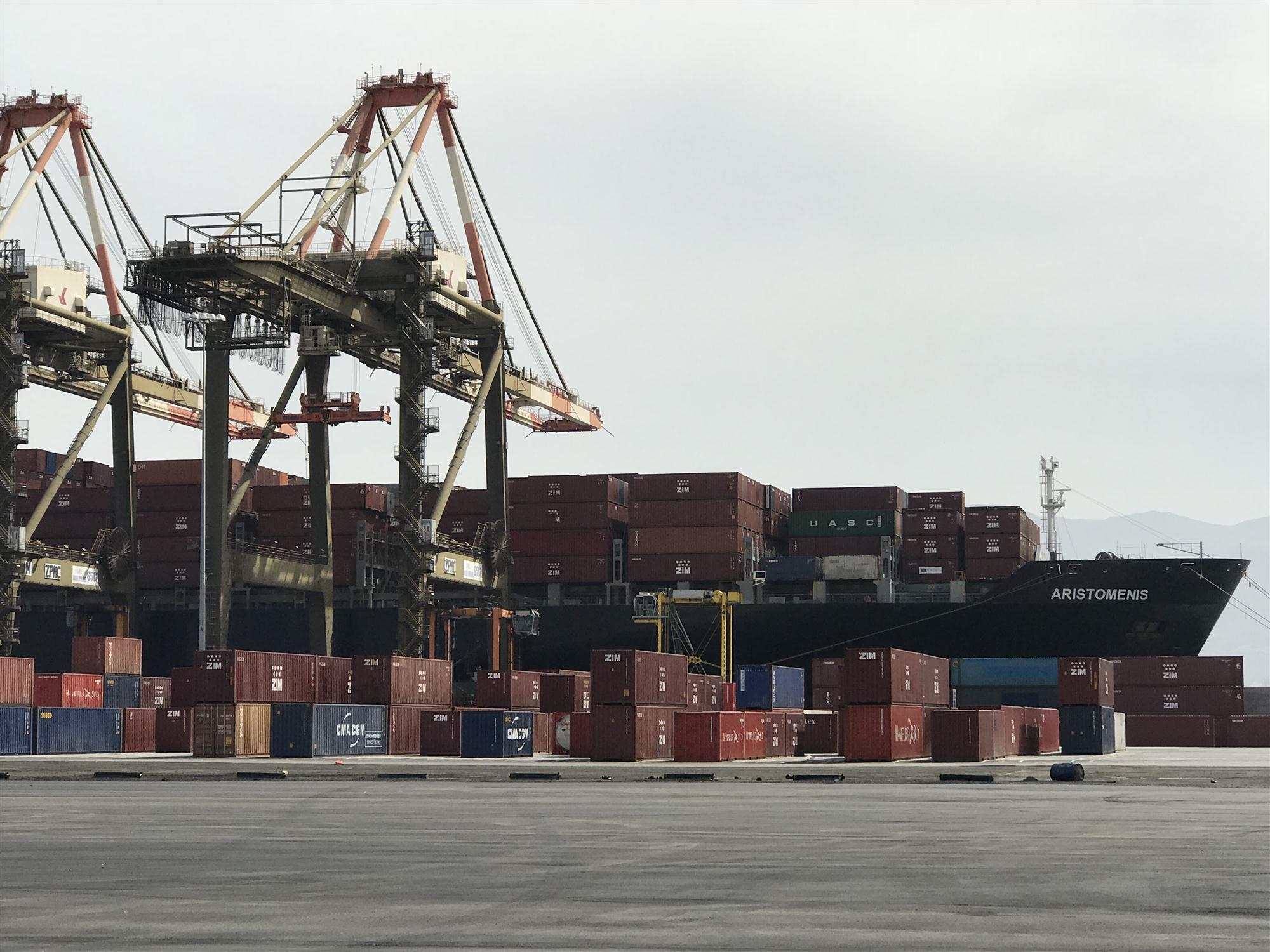Jamaica’s Port of Kingston is seeing a lot of activity these days largely as Kingston Freeport Terminal Ltd (KFTL), a Jamaican consortium formed by French global terminals operator CMA CGM and its majority-owned subsidiary Terminal Link, continues to develop the Kingston Container Terminal (KCT) so that it can efficiently handle the largest container ships traversing the seas today and offer direct connectivity to the entire world.
In July 2016, KCT was privatized with the CMA CGM Group winning a 30-year concession contract. This was big news for the island nation, especially since major Caribbean seaports are fiercely vying for transhipment business as a result of the expanded Panama Canal. The goal now is for the port is to advance its evolution as a major maritime logistics hub of the Caribbean and for Jamaica to become a fourth node for global logistics.
Simon Farhat, KFTL chief operating officer who has worked at seaports within the CMA CGM Group portfolio around the world, explained to Asia Cargo News during a recent port tour that the key benefit of the port is not only its geographic position from which steamship lines offer direct calls to Europe, North America and the Far East; the terminal has ample room for growth.
Currently, CMA CGM and Zim utilize the port as their main hubs in the region. Other major shipping lines that dock in Jamaica are Evergreen Line, Hapag-Lloyd, Maersk and MSC.
“Both CMA CGM and Zim offer direct calls to/from Kingston to Ningbo, Singapore, New York, Rotterdam, Le Havre and Marseilles,” Farhat said.
At the time of Asia Cargo News’ visit, Zim’s Aristomenis was at the port en route for South Korea.
“We have two Zim services,” he said. “They go east and west, to the West Coast United States via the Panama Canal, and eastbound to the Far East.”
A leading transhipment hub for the Americas, 50% of KCT’s business is with China. Cargo comes from China to Kingston for transhipment for North and South America and Europe; empty containers return to China.

So far, KFTL has spent US$400 million on improvements at the port to grow the business. Notably, the South Terminal has been extended by 1,300 metres and the West Terminal by 600 metres. The harbour continues to be dredged. Berthing capacity has been expanded, creating a 600-foot berth as well as two new 300-foot berths that can facilitate multiple post-Panamax vessels.
“We have developed the yard and improved shipping depths,” says Farhat. Today the channel is a depth of 14.5 metres and the port can handle ships carrying upwards of 12,000 to 15,000 TEUs. Plans call for improving depths to 15.5 metres.
Today the port has 16 cranes in operation. “Two Kalmar Liebherr ship-to-shore (STS) cranes were installed in April to handle the big ships,” said Farhat. A new operating system from Navis is also being installed.
While volumes at the port have remained at approximately 1.6 million TEUs for the last three years, these improvements will increase volumes. “We have a five-year plan to increase our investment in the port,” he added. This includes adding 200 people to terminal operations, extending terminal operations further out into the water, and improving depths to 15.5 metres.
KFTL is particularly emphasizing its reefer business. The containers can be washed at the port. Jamaica is also growing its agricultural, aquaculture and value-added food business, while also helping island businesses better export their products. King Pepper, for one, exports 85% of its finished products to the United States, Canada, UK, other Caribbean nations and Japan. Jamaica’s GraceKennedy conglomerate also operates as the largest single-entity food manufacturer in the Caribbean.
“Jamaica has great capacity for good production,” said Audley Shaw, Jamaica’s Minister of Industry, Commerce, Agriculture and Fisheries.
While products manufactured by King Pepper and GraceKennedy do not require reefers, they do add to Jamaica’s containerized freight business, and don’t take away from why the reefer container business is important.
“We want Kingston to be a major transhipment hub for reefer containers,” Farhat said. “We have room to expand. Currently, there are only 100 container terminals in the world doing this size of business.”
Besides expanding the Port of Kingston, officials believe Jamaica is poised to benefit from new and innovative commercial ventures as it seeks to position itself to join Rotterdam, Dubai and Singapore as the fourth node in the global logistics chain.
“Jamaica and the Caribbean are well placed geographically for global trading. It offers a gateway for logistics, and Jamaica offers geo-strategic advantages to access 800 million consumers. Jamaica has inbound and outbound connections to more than 30 ports around the world,” said Grantley Stephenson, CEO of Kingston Wharves Limited (KWL), during the Jamaica Investment Forum held in mid-June in Montego Bay.
KWL has spent billions of dollars to prepare for increased shipping activity arising from expansion of the Panama Canal.
KWL recently opened two logistics centres as part of its multibillion-dollar transformation: a 160,000-square-foot total logistics facility that opened in January 2018 and is located within the KWL Free Zone, and a 784,080-square-foot global auto logistics centre that opened in December 2017 that serves as a one-stop centre for management of automobiles and accessories.
Over the years, developments at KWL have evolved with 1,655 metres of continuous quay, nine deepwater berths, a vessel draft of nine to 13 metres, 172 reefer plugs, 2,694,000 square feet of on-dock open storage, a 522,720-square-foot on-dock transhipment car park, 180,000 square feet of on-dock warehouse storage and 215,000 square feet of off-dock storage at Kingston Wharves Terminal.
In 2016 the government of Jamaica instituted a Special Economic Zone (SEZ) regime to attract and retain targeted investments and sustain economic activity across various sectors of the Jamaican economy. The purpose of the SEZ regime is to bring Jamaica into compliance with the World Trade Organization (WTO) Agreement on Export Subsidies and Countervailing Measures.
By Karen E. Thuermer
Correspondent | Kingston, Jamaica




